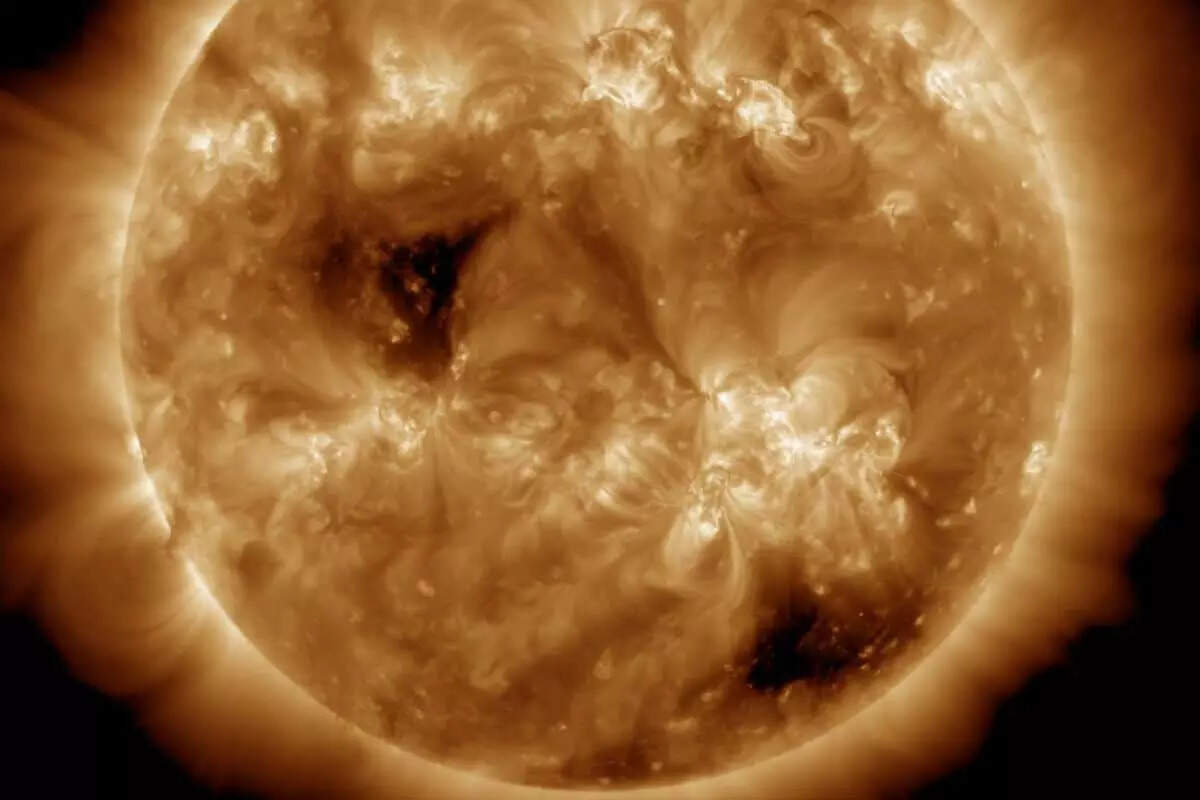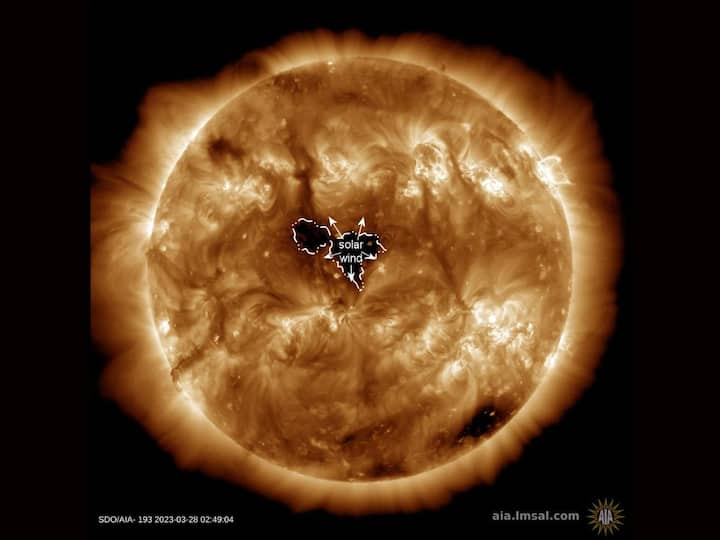
There is a hole in the sun and it is a massive one. Which means that that hot portion of the sun is going to have an impact somewhere else. This is the second ‘coronal hole’ to appear in a week, and it will be unleashing solar winds at 1.8-million-mile-per-hour solar towards Earth.It will reportedly impact Earth on Friday. If you are wondering how these winds impact our planet Earth, here’s some information for you.
- What is a solar storm?When the sun emits huge bursts of energy in the form of hi-speed winds known as solar storms.
- What is a coronal hole?It is a dark patch that appears as a hole in the outermost sphere of the sun ‘Corona’. According to NASA, coronal holes appear as dark areas because they are cooler, less dense regions than the surrounding plasma and are regions of open, unipolar magnetic fields.
- Impact of solar storm on Earth?A solar storm can have huge impacts on the planet Earth. From impacting the magnetic fields to creating disturbances in the magnetosphere and ionosphere. In easy terms, it can cause power outages, radio blackouts and internet problems!
- Can a solar storm end life on Earth?Even though the impact of solar storms is huge on the environment jacket of Earth, it cannot be lethal. We have a very thick blanket around us.
Solar Storm Caused By Huge Coronal Hole 20-30 Times Earth’s Size Could Hit The Planet On Friday
The coronal hole is now facing our planet. When the solar storm arrives at Earth, it is likely to result in Arctic auroras, which are a beautiful spectacle.

Earth could be hit by a solar storm on Friday, due to solar winds heading towards the planet from a coronal hole. The hole is 20 to 30 times the size of Earth. ( Image Source : NASA Solar Dynamics Observatory )
A solar storm caused by a hole in the Sun’s atmosphere could hit Earth on Friday, March 31, 2023. This is because gaseous material is flowing from the hole, called a coronal hole, and a stream of solar wind is heading for Earth.
The coronal hole is now facing our planet, according to spaceweather.com. When the solar storm arrives at Earth, it is likely to result in Arctic auroras, which are a beautiful spectacle.
What is a coronal hole?
A coronal hole is a dark area in the solar corona that can be observed in extreme ultraviolet and soft X-ray solar images, and appears dark because it is a cooler, less dense region compared to the surrounding plasma. A coronal hole is a region of open, unipolar (having a single pole) magnetic field, which allows the solar wind to escape more readily into space, resulting in streams of relatively fast solar wind, according to the National Oceanic and Atmospheric Administration (NOAA).
What is a co-rotating region on the Sun?
A co-rotating interaction region (CIR), or a compression region ahead of a coronal hole high-speed stream, is expected to enhance the solar wind field. The interaction of slower, ambient solar winds ahead of the high-speed stream results in the formation of a CIR.
Due to the coronal hole high-speed stream influences, there will be an increase in the solar wind speed, according to the NOAA. Influences from the periphery of the March 20 Coronal Mass Ejection (CME) is likely to result in additional minor enhancements in solar wind speed.
What is a coronal mass ejection?
A coronal mass ejection is a large expulsion of plasma and magnetic field from the Sun’s corona, and can travel at speeds ranging from slower than 250 kilometres per second, to as fast as 3,000 kilometres per second.
The formation of the CIR, the onset of the coronal hole high-speed stream influences, and other coronal mass ejection influences began by late March 23.
Coronal hole that could result in solar storm on Friday is the size of 20-30 Earths
The coronal hole which is likely to result in a solar storm that could hit Earth on Friday is about 300,000 to 400,000 kilometres across, a Business Insider report said, quoting Alex Young from NASA’s Goddard Space Flight Center. Young said that the size of the coronal hole is equivalent to about 20 to 30 Earths lined up back-to-back.
However, since a minor stream of solar wind is heading for Earth, the storm is likely to be less severe.
An X1.2 flare occurred from a region on the Sun on March 29, peaking at 8:03 am IST. An X1.2 solar flare is a powerful solar flare, and belongs to the X-class, which denotes the most intense flares. This resulted in an R3 HF (High Frequency) radio blackout event. An R3 event is a strong radio blackout event in which there is a wide-area blackout of high-frequency radio communication, and loss of radio contact for about an hour on the sunlight side of the Earth.
On March 24, Earth was hit by the most powerful solar storm in nearly six years. It was a severe G4 geomagnetic storm. This is a geomagnetic storm which can disrupt power systems and spacecraft operations. A major disturbance of Earth’s magnetosphere that occurs when there is a very efficient energy exchange from the solar wind to the space environment surrounding Earth is called a geomagnetic storm.







